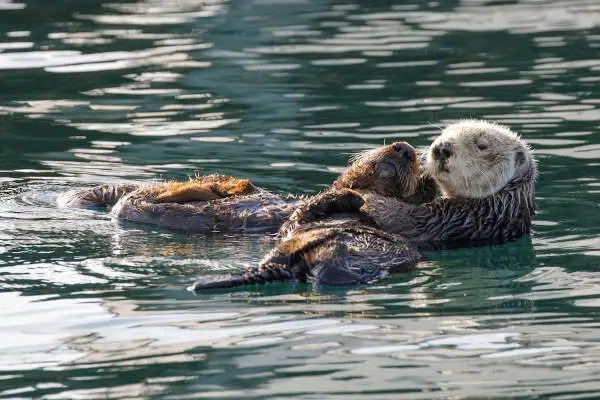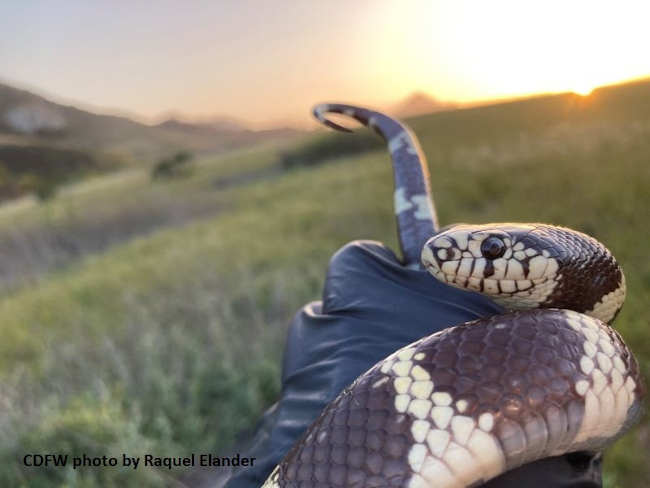- California Department of Fish and Wildlife
- Posted On
California Outdoors: Turkey hunting, distinctive jellyfish, streambeds and creeks

Can I use a 10-gauge shotgun to hunt turkey?
Q: Can I use a 10-gauge shotgun to hunt turkey?
A: Yes. California Code of Regulations (CCR), Title 14, section 311(a) authorizes use of a shotgun, 10-gauge or smaller, using shot shells only and incapable of holding more than three shells in the magazine and chamber combined. If a plug is used to reduce the capacity of a magazine per the requirements of this section, the plug must be made of one-piece construction and incapable of removal without disassembling the gun.
While it’s legal to hunt turkey with a 10-gauge shotgun, we’d like to share some additional perspective. Keep in mind that one of the most enjoyable elements of turkey hunting is coaxing the bird into your decoys, or concealed position, to get a close shot. With experience, practice and patience, you’ll be able to get birds in close enough to take them with a firearm as simple as a .410.
California's general spring turkey season opened statewide on March 25 and runs through April 30. Archery season follows from May 1-14 and runs concurrently with the junior hunt period. Shooting hours for spring turkeys are one half-hour before sunrise to 5 p.m. A valid hunting license and upland game bird validation are required to hunt wild turkeys. Hunting licenses can be purchased on CDFW’s Online License Sales and Services webpage.
Distinctive jellyfish
Q: I read about Velella velella washing up on beaches along the California coastline. Are they dangerous?
A: No, they are not dangerous. Velella velella, commonly known as By-the-wind sailors, are a distinctive jellyfish. Their bodies have a clear, chitinous semicircular to triangular sail which sticks up above the water with a blue float beneath made of concentric circles of gas-filled chambers, per Scripps Institution of Oceanography.
Velella velella cannot actively control their direction — they “sail” on the winds and, in the correct conditions, will wash ashore if blown too close. This happens occasionally in California and along the west coast. The species is relatively common, but they are typically only seen onshore during events like this.
For California Department of Fish and Wildlife (CDFW) marine news and information visit the department’s Marine Region webpage.
Streambeds and creeks
Q: The recent storms caused a levee near a creek in my community to break which caused flooding. We didn’t know if we needed permission from CDFW to clear the creek. What are the rules for homeowners taking action and clearing debris from streambeds and creeks?
A: We appreciate you checking in on this. Under California Fish and Game Code (FGC) section 1610, emergency work in streams does not require advance notification to CDFW. "Emergency" is defined as a sudden, unexpected occurrence involving a clear and imminent danger, demanding immediate action to prevent or mitigate loss of, or damage to, life, health, property or essential public services, per Public Resources Code section 21060.3.
Please note that:
• Emergency actions can occur in advance of the actual damaging event;
• Emergency actions may also include necessary subsequent actions (e.g. debris removal) that followed an immediate emergency (e.g. flooding);
• Entities must notify CDFW in writing within 14 days after beginning the emergency work; and CDFW is available to assist with any related questions. Please contact the Regional Manager of the applicable Regional Office.
• Also see from CDFW’s website: more information regarding the emergency notification process and more information about CDFW’s streambed alteration program in general.
For non-emergency projects, notification to CDFW may be required, per FGC section 1602. Notification would be followed by issuance of a Lake or Streambed Alteration Agreement for the project. CDFW recommends contacting the Regional Office associated with the location of your project if you have any questions about the permitting process for Lake or Streambed Alterations.





 How to resolve AdBlock issue?
How to resolve AdBlock issue? 




